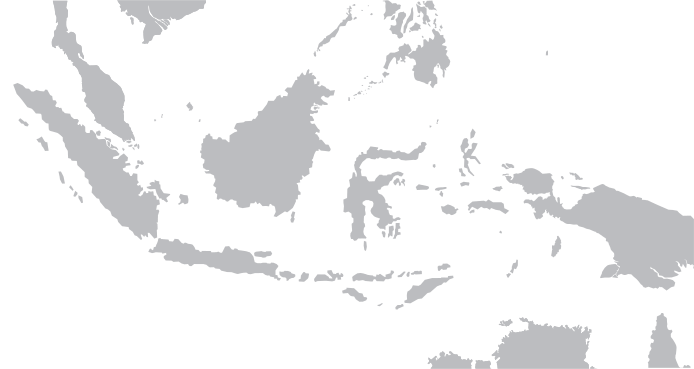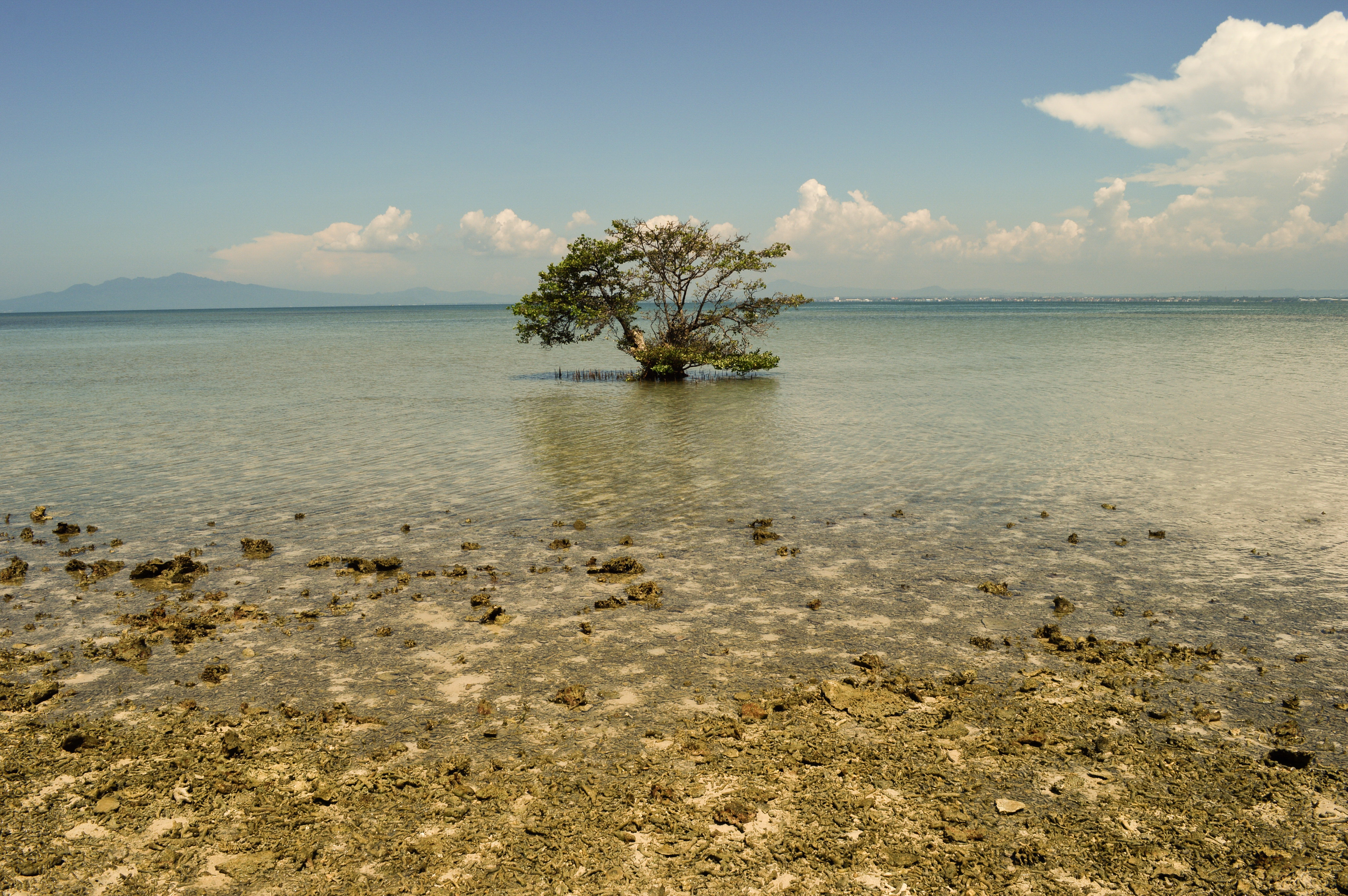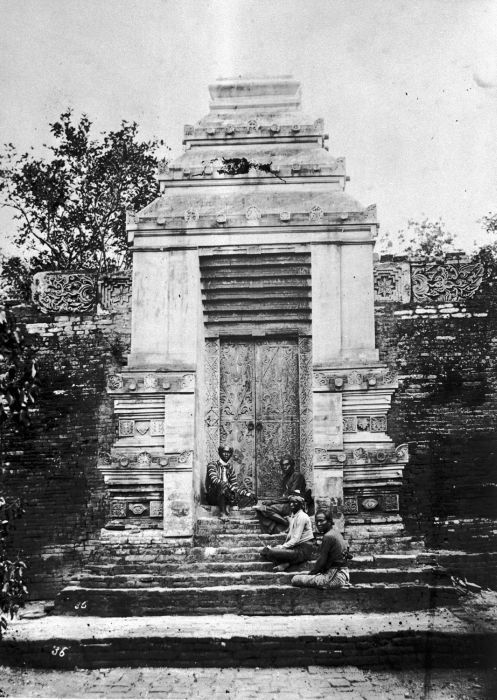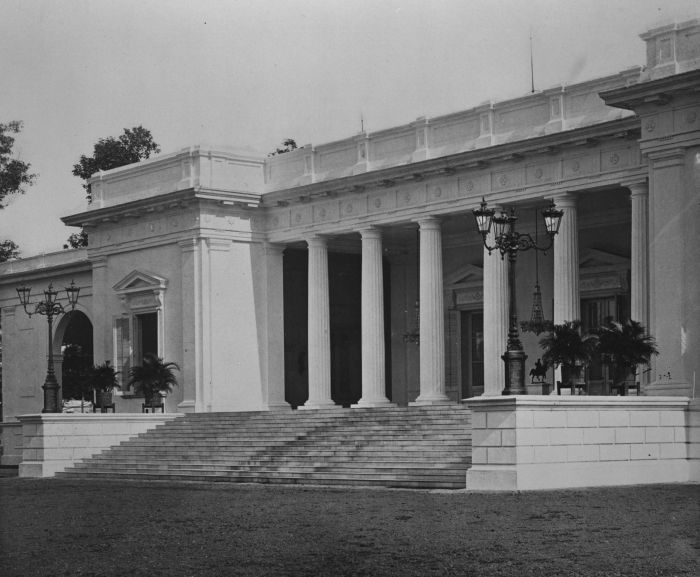|
Fort Willem Ii, Ungaran
Fort Willem II of Ungaran (known locally as Benteng Ungaran or Benteng Diponegoro) is a late 18th-century fort built by the Dutch in Ungaran, Semarang Regency, Central Java, Indonesia. Its main purpose was to control an important trade route between Semarang and Yogyakarta. The fort is the place where Prince Diponegoro was imprisoned while waiting for his judgment in Batavia and further exile to Makassar. The fort is currently used as a dormitory for the families of Indonesian police personnel. Description Fort Willem II is a small square-shaped fort with four bastions, located in the center of Ungaran, on the Semarang-Surakarta road. The building of the Regional People's Representative Assembly (DPRD) is located just in front of the fort. A moat used to surround the fort until the 19th century, when it was filled in. The fort consists of a one meter thick wall around a two-story building which provides a vantage point to the western main entrance and the eastern back entrance. ... [...More Info...] [...Related Items...] OR: [Wikipedia] [Google] [Baidu] |
Ungaran
Ungaran ( Dutch: ''Oengaran'') is a town in Central Java, Indonesia and the administrative centre of the Semarang Regency in the province of Central Java. Ungaran is located at -7° 8' 17", 110° 24' 18" at an elevation of 319 metres. It encompasses two districts (''kecamatan'') within the Regency - Ungaran Barat (West Ungaran) and Ungaran Timur (East Ungaran). In the 19th century, defensive posts were established between Semarang and Surakarta to control the trade route between the two cities. A fort known as Fort Ontmoeting was established in Ungaran. Climate Ungaran has a tropical rainforest climate A tropical rainforest climate, humid tropical climate or equatorial climate is a tropical climate sub-type usually found within 10 to 15 degrees latitude of the equator. There are some other areas at higher latitudes, such as the coast of southea ... (Af) with moderate rainfall from June to September and heavy to very heavy rainfall from November to May. References Re ... [...More Info...] [...Related Items...] OR: [Wikipedia] [Google] [Baidu] |
Gustaaf Willem Van Imhoff
Gustaaf Willem, Baron van Imhoff (8 August 1705 – 1 November 1750) was a Dutch colonial administrator for the Dutch East India Company (VOC). He served as Governor of Ceylon from 1736 to 1740 and as Governor-General of the Dutch East Indies from 1743 until his death in 1750 at Istana Cipanas. Early years Van Imhoff was born into the East Frisian branch of the Imhoff family from Nuremberg. His father, Wilhelm Heinrich Freiherr von Imhoff came from the town of Leer in northwestern Germany, a few kilometers from the Dutch border. In 1725 Van Imhoff entered into the service of the Dutch East India Company in Batavia (modern-day Jakarta), then colonial capital of the Dutch East Indies. Van Imhoff was promoted several times within the company before being appointed colonial governor in Ceylon (Modern-day Sri Lanka) on 23 July 1736. Ceylon Van Imhoff's tenure as governor of Ceylon put an end to the chaos that had pervaded the previous administration. He established constructiv ... [...More Info...] [...Related Items...] OR: [Wikipedia] [Google] [Baidu] |
Installations Of The Royal Netherlands East Indies Army ) or political one
{{disambig ...
Installation may refer to: * Installation (computer programs) * Installation, work of installation art * Installation, military base * Installation, into an office, especially a religious (Installation (Christianity) Installation is a Christian liturgical act that formally inducts an incumbent into a new role at a particular place such as a cathedral. The term arises from the act of symbolically leading the incumbent to their stall or throne within the cathedra ... [...More Info...] [...Related Items...] OR: [Wikipedia] [Google] [Baidu] |
Dutch East India Company
The United East India Company ( nl, Verenigde Oostindische Compagnie, the VOC) was a chartered company established on the 20th March 1602 by the States General of the Netherlands amalgamating existing companies into the first joint-stock company in the world, granting it a 21-year monopoly to carry out trade activities in Asia. Shares in the company could be bought by any resident of the United Provinces and then subsequently bought and sold in open-air secondary markets (one of which became the Amsterdam Stock Exchange). It is sometimes considered to have been the first multinational corporation. It was a powerful company, possessing quasi-governmental powers, including the ability to wage war, imprison and execute convicts, negotiate treaties, strike its own coins, and establish colonies. They are also known for their international slave trade. Statistically, the VOC eclipsed all of its rivals in the Asia trade. Between 1602 and 1796 the VOC sent almost a million Eur ... [...More Info...] [...Related Items...] OR: [Wikipedia] [Google] [Baidu] |
Dutch East Indies
The Dutch East Indies, also known as the Netherlands East Indies ( nl, Nederlands(ch)-Indië; ), was a Dutch colony consisting of what is now Indonesia. It was formed from the nationalised trading posts of the Dutch East India Company, which came under the administration of the Dutch government in 1800. During the 19th century, the Dutch possessions and hegemony expanded, reaching the greatest territorial extent in the early 20th century. The Dutch East Indies was one of the most valuable colonies under European rule, and contributed to Dutch global prominence in spice and cash crop trade in the 19th to early 20th centuries. The colonial social order was based on rigid racial and social structures with a Dutch elite living separate from but linked to their native subjects. The term ''Indonesia'' came into use for the geographical location after 1880. In the early 20th century, local intellectuals began developing the concept of Indonesia as a nation state, and set the ... [...More Info...] [...Related Items...] OR: [Wikipedia] [Google] [Baidu] |
Indonesian National Armed Forces
, founded = as the ('People's Security Forces') , current_form = , disbanded = , branches = , headquarters = Cilangkap, Jakarta , website = , commander-in-chief = Joko Widodo , commander-in-chief_title = Commander-in-Chief , chief minister = Mahfud MD , chief minister_title = Coordinating Minister for Political, Legal, and Security Affairs , minister = Lt. Gen. (ret.) Prabowo Subianto , minister_title = Minister of Defence , commander = Admiral Yudo Margono , commander_title = Commander of the Armed Forces , age = 17 , conscription = No , manpower_data = 2016 , manpower_age = , available = 131,000,000 , available_f = , fit = 108,000,000 , fit_f = , reaching = 4,500,000 , reaching_f = , active = 400,000 , ranked = 13th , reserve ... [...More Info...] [...Related Items...] OR: [Wikipedia] [Google] [Baidu] |
Rembang
Rembang Regency ( id, Kabupaten Rembang) is a regency ( id, kabupaten) on the extreme northeast coast of Central Java Province, on the island of Java (bordering on the Java Sea) in Indonesia. The regency covers an area of 1,035.70 km2 on Java. Its capital city is Rembang. Geography It is a lowland, with a maximum elevation of about above sea level. The Solo River flows through its inland section. The regency is crossed by the North Coast Road, an inter-province main road on the island. Borders Rembang Regency is bordered by: *North : Java Sea *East : Tuban Regency in East Java Province *South : Blora Regency *West : Pati Regency Population The Regency had a population of 591,359 people at the 2010 Census, 618,780 at the 2015 Census and 645,333 at the 2020 Census, of whom 324,593 were male and 320,740 were female. Administrative districts The regency is divided into fourteen districts (''kecamatan''), tabulated below with their areas and their populations at t ... [...More Info...] [...Related Items...] OR: [Wikipedia] [Google] [Baidu] |
Java War
The Java War ( jv, ꦥꦼꦫꦁꦗꦮ) or Diponegoro War () was fought in central Java from 1825 to 1830, between the colonial Dutch Empire and native Javanese rebels. The war started as a rebellion led by Prince Diponegoro, a leading member of the Javanese aristocracy who had previously cooperated with the Dutch. The rebel forces laid siege to Yogyakarta, a move that prevented a quick victory. This gave the Dutch time to reinforce their army with colonial and European troops, allowing them to end the siege in 1825. After this defeat, the rebels continued fighting a guerrilla war for five years. The war ended in a Dutch victory, and Prince Diponegoro was invited to a peace conference. He was betrayed and captured. Due to the cost of the war, Dutch colonial authorities implemented major reforms throughout the Dutch East Indies to ensure the colonies remained profitable. History The direct cause of the Java War was the decision by the Dutch to build a road across a piece ... [...More Info...] [...Related Items...] OR: [Wikipedia] [Google] [Baidu] |
Batavian Republic
The Batavian Republic ( nl, Bataafse Republiek; french: République Batave) was the successor state to the Republic of the Seven United Netherlands. It was proclaimed on 19 January 1795 and ended on 5 June 1806, with the accession of Louis Bonaparte to the Dutch throne. From October 1801 onward, it was known as the Batavian Commonwealth ( nl, Bataafs Gemenebest). Both names refer to the Germanic tribe of the ''Batavi'', representing both the Dutch ancestry and their ancient quest for liberty in their nationalistic lore. In early 1795, intervention by the French Republic led to the downfall of the old Dutch Republic. The new Republic enjoyed widespread support from the Dutch populace and was the product of a genuine popular revolution. However, it was founded with the armed support of the French revolutionary forces. The Batavian Republic became a client state, the first of the " sister-republics", and later part of the French Empire of Napoleon. Its politics were deepl ... [...More Info...] [...Related Items...] OR: [Wikipedia] [Google] [Baidu] |
Kartosuro
Kartosuro (also spelled Kartasura) is an Indonesian subdistrict ''(Kecamatan)'' in the Sukoharjo Regency, Central Java. Kartosuro is a Surakarta's satellite city, and a junction of Surabaya-Solo-Yogyakarta and Solo-Semarang highway. It can be reached within minutes southward of Surakarta's International Airport of Adi Sumarmo. Capital of Mataram 1680–1755 In the seventeenth century Kartosuro was the capital of the Sultanate of Mataram between 1680 and 1755. It is commonly referred to as the Kartasura era or period of the Mataram sultanate—it preceded the transfer to Surakarta by Pakubuwana II. There were considerable problems for the sultanate in this era: * A difficult relationship with the Dutch East India Company (VOC) * The issues of succession, such as Treaty of Giyanti (1755) * The ''Geger Pecinan'', Chinese rebellion which burnt the palace (1743) Ruins There are 2 palace sites, keraton of Kartosuro in the kelurahan of Kartosuro and keraton of Pajang's ru ... [...More Info...] [...Related Items...] OR: [Wikipedia] [Google] [Baidu] |
Mataram Sultanate
The Sultanate of Mataram () was the last major independent Javanese kingdom on the island of Java before it was colonised by the Dutch. It was the dominant political force radiating from the interior of Central Java from the late 16th century until the beginning of the 18th century. Mataram reached its peak of power during the reign of Sultan Agung Anyokrokusumo (), and began to decline after his death in 1645. By the mid-18th century, Mataram lost both power and territory to the Dutch East India Company (Dutch: ''Vereenigde Oost-Indische Compagnie''; ''VOC''). It had become a vassal state of the company by 1749. Etymology The name ''Mataram'' itself was never the official name of any polity, as the Javanese often refer to their realm simply as ''Bhumi Jawa'' or ''Tanah Jawi'' ("Land of Java"). ''Mataram'' refers to the historical areas of plains south of Mount Merapi around present-day Muntilan, Sleman, Yogyakarta, and Prambanan. More precisely, it refers to the Kota ... [...More Info...] [...Related Items...] OR: [Wikipedia] [Google] [Baidu] |
Governor-General Of The Dutch East Indies
The governor-general of the Dutch East Indies ( nl, gouverneur-generaal van Nederlands Indië) represented Dutch rule in the Dutch East Indies between 1610 and Dutch recognition of the independence of Indonesia in 1949. Occupied by Japanese forces between 1942 and 1945, followed by the Indonesian National Revolution until 1949. Indonesia proclaimed its independence on 17 August 1945. History The first governors-general were appointed by the Dutch East India Company (VOC). After the VOC was formally dissolved in 1800, the territorial possessions of the VOC were nationalised under the Dutch government as the Dutch East Indies, a colony of the Netherlands. Governors-general were now appointed by either the Dutch monarch or the Dutch government. During the Dutch East Indies era most governors-general were expatriate Dutchmen, while during the earlier VOC era most governors-general became settlers who stayed and died in the East Indies. Under the period of British control (1 ... [...More Info...] [...Related Items...] OR: [Wikipedia] [Google] [Baidu] |

%2C_Hoorn.jpg)





